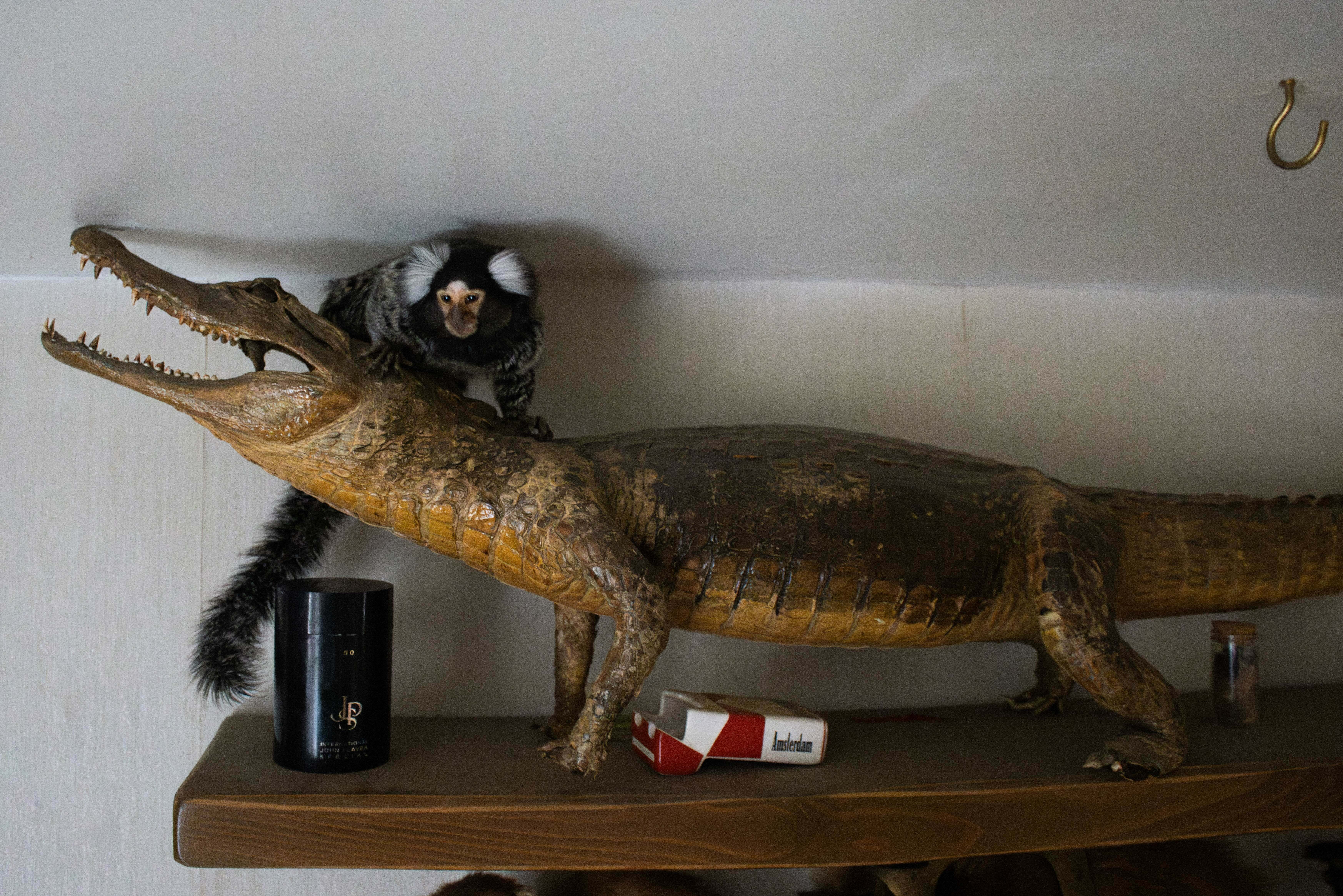

Initially, he was unsure of what to expect when visiting these homes and worried there would be evidence of neglect. Instead Clark witnessed “a new level of compassion for pet ownership”. Because of the complex care these animals require, their owners form unusually strong attachments with them – potentially more than those seen with conventional pets like dogs and cats, Clark observes. His work seeks to understand what drives someone to choose a high-maintenance, sometimes dangerous animal over a traditional companion.
“It’s a form of escapism,” Clark explains. “These people often had a struggle or something hard going on in their life. So, to have something exotic in their life was a form of luxury.”
From four curious rats darting across a worn leather sofa, to a marmoset monkey perched atop a taxidermy alligator, Clark captures the surreal domestication of these wild creatures. One particularly striking portrait features Dave and his black and white tegu, a large lizard native to South America. Snuggled together on a sofa, the tegu’s striped tail neatly uncurls down to the floor, its head resting below a pillow embroidered with a gold crown. Dave, in a relaxed foetal position, cradles the reptile gently in his arms, in a powerful display of trust.
After a motorbike accident, Dave was unable to work and began rescuing neglected exotic animals, rehabilitating them in his council house in Redruth, Cornwall. With multiple reptiles to care for, his home – shared with his three young daughters – is filled with glass tanks and the constant chirping of crickets.






